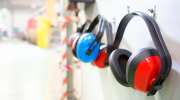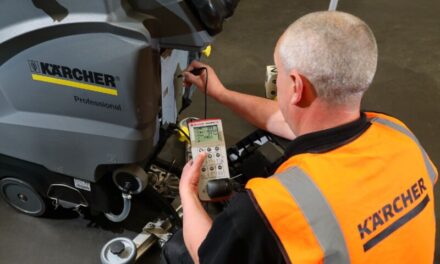David Ford, Compliance Lead at CHAS highlights seven areas to pay attention to to prevent work-related hearing loss. 
Exposure to elevated levels of noise at work can lead to irreversible hearing damage and it remains one of the commonest occupational health complaints, accounting for 75% of all health-related civil claims in industry according to latest HSE data. However, there are many ways to reduce noise and noise exposure in the workplace and most often a combination of methods works best.
1. Noise assessments need to be carried out where an issue of elevated noise has been identified. The HSE has provided this helpful guide for businesses on how to recognise if noise in their workplace could cause potential health issues. The Control of Noise at Work Regulations 2005 stipulate specific noise exposure action levels which employers need to measure themselves against and noise assessments must be carried out be someone who is competent and understands what needs to be done to comply with the law – be it in-house personnel or external contractors who specialise in noise risk assessment.
2. Eliminating the noise at source should always be the first measure for reducing the effects of noise exposure, according to the HSE, either by removing the noisy work process or machinery altogether or outsourcing it. Segregating noisy work from other work activities and using walls, screens and barriers will limit exposure. Duration of exposure can be reduced by rotating shift patterns or by the provision of a noise refuge. Substituting noisy machines for quieter ones is the next best option where elimination can’t be achieved completely.
3. Machinery suppliers are under obligation to make products generate as little noise as possible according to the Supply of Machinery (Safety) Regulations 2008 so liaise with manufacturers prior to purchase to understand the likely noise levels their machinery will emit. Consider implementing a positive noise reducing purchasing policy. The HSE Buy Quiet guide is about manufacturers, importers, suppliers and users of equipment working together to reduce the risks from noise in the workplace. Where applying noise control solutions to existing machinery is necessary there are many products that can significantly reduce decibel levels in resonant areas while offering little to no change in how effectively it operates. For more ideas, the Engineering Industry Noise Task Group have produced a Top 10 of Noise Control Techniques
4. Personal protective equipment (PPE) is useful but as with all PPE hearing protection should be the last line of defence. The aim is to eliminate or reduce the risk to hearing by all other means first. Hearing protection can offer its own set of risks with ‘over protection’ reducing the ability for employees to communicate effectively with each other or be alert to impending hazards and warning signals. In some workplaces hearing protection with active listening features is now being mandated which protects workers from damaging noise while still allowing them to hear at a safe level.
Employers are required to provide hearing protection to employees if they ask for it and if the noise exposure exceeds the upper noise action levels. Equipment must be well-maintained, correctly fitted and appropriate for the specific task and employees should be trained in how to use it properly where required.
5. Workplace signage alerts employees to where the noise hazards are and where the wearing of PPE is mandatory. Innovative noise-activated warning signs can be triggered to illuminate when noise reaches a specific decibel level and some interactive signage can even log data and track noise levels. Workplace signage isn’t just necessary to highlight where the noise is but also where it isn’t. Signs directing employees to noise exclusion areas and refuges are just as important in the overall management of limiting the impact of noise exposure.
6. Health surveillance and early intervention are key to ensuring the best outcome for workers exposed to noise. It’s important to teach employees how to recognise some of the early warning signs of hearing damage in themselves. The HSE recommends regular hearing checks, annually at first and then at three yearly intervals after the first two years of employment.
7. Training is vital for workplaces where employees are exposed to noise likely to be at or above the lower action value. Training should cover the types of risks the employee may face, action and prevention, PPE and what they should be doing as individuals to minimise damage to their hearing.

